Deep Processing of Dump Slag from the Copper-Nickel Industry
Abstract
:1. Introduction
2. Materials and Methods
2.1. Materials
2.2. Analysis
2.3. Sulfuric Acid Leaching Tests
2.4. Recovery of SiO2
2.5. Recovery of Non-Ferrous Metals
2.6. Iron and Magnesium Separation
3. Results and Discussion
3.1. Characterization of Dump Slag
3.2. Leaching Slag Test
3.3. SiO2 Recovery from Sulfuric Acid Slag Leaching Solutions
3.4. Solution Processing after SiO2 Extraction
3.4.1. Non-Ferrous Metals Recovery
3.4.2. Production of Iron Oxide Powders and Magnesium Sulfate
3.5. Scheme of Sulfuric Acid Processing of Dump Slag
4. Conclusions
- (1)
- A new method of utilizing waste slag from copper-nickel production was developed. The method includes two-stage slag decomposition with dilute solutions of sulfuric acid (7–10 wt.%) with more than 70% silicon, 77% iron and 78% magnesium in the solution, and a concentration of base metals in the residue, separation of silicon dioxide from leaching solutions by solution dehydration, separation of iron oxide powder and magnesium sulfate by solution dehydration, and subsequent calcination of dehydrated powder;
- (2)
- The effect of leaching solution dehydration temperature on the morphology and surface characteristics of silica was shown. Silica particle size decreased from 60 to 7 μm when the dehydration temperature was increased from 40 to 270 °C;
- (3)
- A method of separating iron and magnesium from solutions was developed. The difference in decomposition temperatures of iron and magnesium sulphates was based on the process. The calcination of dehydrated powder at 750–850 °C, followed by water leaching, allows the obtaining of iron dioxide of pigment quality and magnesium sulphate;
- (4)
- Due to sulfuric acid leaching in the undecomposed residue, sulfide grains encapsulated in ferrosilicate were exposed, which is a favorable factor for flotation. The depleted residue can be successfully used in the construction industry.
5. Patents
Author Contributions
Funding
Data Availability Statement
Acknowledgments
Conflicts of Interest
References
- Nornickel. Expanding the Horizons of Sustainable Growth. Annual Report. 2019. Available online: https://ar2019.nornickel.com/strategic-report/key-investment-projects/environmental (accessed on 15 May 2023).
- Zosin, A.P.; Priymak, T.I.; Koshkina, L.B. Ecological aspects of geochemical transformation processes of mineral waste from the processing of sulfide copper-nickel ores. Ekol. Khimiya 2003, 12, 34–42. [Google Scholar]
- Parshina, M.V. Ecological and geochemical peculiarities of transformation of slag dumps in the acidification zone. J. Min. Inst. 2006, 167, 90–93. [Google Scholar]
- Moncur, M.C.; Jambor, J.L.; Ptacek, C.J.; Blowes, D.W. Mine drainage from the weathering of sulfide minerals and magnetite. Appl. Geochem. 2009, 24, 2362–2373. [Google Scholar] [CrossRef]
- Potapov, D.S.; Svetlov, A.V.; Potapov, S.S.; Men’shikov, Y.P.; Nesterov, D.P.; Makarov, D.V. Experimental modeling of weathering uneven slag copper-nickel production. Mineral. Tekhnogenezisa 2013, 14, 38–49. [Google Scholar]
- Moncur, M.C.; Ptacek, C.J.; Hayashi, M.; Blowes, D.W.; Birks, S.J. Seasonal cycling and mass-loading of dissolved metals and sulfate discharging from an abandoned mine site in northern Canada. Appl. Geochem. 2013, 41, 176–188. [Google Scholar] [CrossRef]
- Kasikov, A.; Neradovsky, Y.; Huber, M.; Mayorova, Y.; Rakitina, E.; Grishin, N. Heterogeneity of glass components in slagafter nickel acquisition process from Kola Peninsula (Russia). Metall. Foundry Eng. 2017, 43, 89–96. [Google Scholar] [CrossRef] [Green Version]
- Ettler, V.; Mihaljevič, M.; Drahota, P.; Kříbek, B.; Nyambe, I.; Vaněk, A.; Penížek, V.; Sracek, O.; Natherová, V. Cobalt-bearing copper slags from Luanshya (Zambian Copperbelt): Mineralogy, geochemistry, and potential recovery of critical metals. J. Geochem. Explor. 2022, 237, 106987. [Google Scholar] [CrossRef]
- Zhang, H.-B.; Wang, Y.-N.; Zhu, Y.-B.; Ren, P.; Hu, B.; Xu, S.-H.; Cao, H.-Z.; Zhou, J.; Zheng, G.-Q. Determination of occurrence and leaching toxicity of arsenic in copper flash smelting slags. Trans. Nonferrous Met. Soc. China 2023, 33, 293–303. [Google Scholar] [CrossRef]
- Nicholson, R.V.; Scharer, J.M. Laboratory Studies of Pyrrhotite Oxidation Kinetics. Environ. Geochem. Sulfide Oxid. 1993, 2, 14–30. [Google Scholar]
- Heikkinen, P.M.; Räisänen, M.L.; Johnson, R.H. Geochemical characterization of seepage and drainage water quality from two sulphide mine tailings impoundments: Acid mine drainage versus neutral mine drainage. Mine Water Environ. 2009, 28, 30–49. [Google Scholar] [CrossRef]
- Dold, B. Basic concepts in environmental geochemistry of sulphide minewaste management. In Waste Management; Kumar, S., Ed.; InTech: Rijeka, Croatia, 2010; pp. 173–198. [Google Scholar]
- Warren, L.A. Acid Rock Drainage. In Encyclopedia of Geobiology. Encyclopedia of Earth Sciences Series; Reitner, J., Thiel, V., Eds.; Springer: Dordrecht, The Netherlands, 2011; pp. 5–8. [Google Scholar]
- Marescotti, P.; Carbone, C.; Comodi, P.; Frondini, F.; Lucchetti, G. Mineralogical and chemical evolution of ochreous precipitates from the Libiola Fe-Cu-sulfide mine (Eastern Liguria, Italy). Appl. Geochem. 2012, 27, 577–589. [Google Scholar] [CrossRef]
- Valente, T.; Grande, J.A.; de la Torre, M.L.; Santisteban, M.; Cerón, J.C. Mineralogy and environmental relevance of AMD-precipitates from the Tharsis mines, Iberian Pyrite Belt (SW, Spain). Appl. Geochem. 2013, 39, 11–25. [Google Scholar] [CrossRef]
- Jiao, Y.; Zhang, C.; Su, P.; Tang, Y.; Huang, Z.; Ma, T. A review of acid mine drainage: Formation mechanism, treatment technology, typical engineering cases and resource utilization. Process Saf. Environ. Prot. 2023, 170, 1240–1260. [Google Scholar] [CrossRef]
- Alp, I.; Deveci, H.; Süngün, H. Utilisation of flotation wastes of copper slag as raw material in cement production. J. Haz. Mater. 2008, 159, 390–395. [Google Scholar] [CrossRef]
- Piatak, N.M.; Parsons, M.B.; Seal, R.R., II. Characteristics and environmental aspects of slag: A review. Appl. Geochem. 2015, 57, 236–266. [Google Scholar] [CrossRef]
- Liao, M.-I.; Shih, X.-H.; Ma, H.-W. Secondary copper resource recycling and reuse: A waste input–output model. J. Clean. Prod. 2019, 239, 118142. [Google Scholar] [CrossRef]
- Gümüşsoy, A.; Başyiğit, M.; Kart, E.U. Economic potential and environmental impact of metal recovery from copper slag flotation tailings. Resour. Policy 2023, 80, 103232. [Google Scholar] [CrossRef]
- EIT. EIT RawMaterials Call for KAVA Projects SeedBook User Guide; EIT: Stockholm, Sweden, 2020; pp. 1–2. [Google Scholar]
- Shen, H.; Forssberg, E. An overview of recovery of metals from slags. Waste Manag. 2003, 23, 933–949. [Google Scholar] [CrossRef]
- Phiri, T.C.; Singh, P.; Nikoloski, A.N. The potential for copper slag waste as a resource for a circular economy: A review—Part II. Miner. Eng. 2021, 172, 107150. [Google Scholar] [CrossRef]
- Yang, J.; Firsbach, F.; Sohn, I. Pyrometallurgical processing of ferrous slag “co-product” zero waste full utilization: A critical review. Resour. Conserv. Recycl. 2022, 178, 106021. [Google Scholar] [CrossRef]
- Phiri, T.C.; Singh, P.; Nikoloski, A.N. The potential for copper slag waste as a resource for a circular economy: A review—Part I. Miner. Eng. 2022, 180, 107474. [Google Scholar] [CrossRef]
- Al-Jabri, K.S.; Al-Saidy, A.H.; Taha, R. Effect of copper slag as a fine aggregate on the properties of cement mortars and concrete. Constr. Build. Mater. 2011, 25, 933–938. [Google Scholar] [CrossRef]
- Nath, S.K.; Randhawa, N.S.; Kumar, S. A review on characteristics of silico-manganese slag and its utilization into construction materials. Resour. Conserv. Recycl. 2022, 176, 105946. [Google Scholar] [CrossRef]
- Soni, J.; Chokshi, T.; Sharma, R.; Gujar, R.; Jariwala, N. Assessing the Applicability of Fine Copper Slag in Road and Structural Fill Application. Mater. Today Proc. 2022, 62, 7040–7043. [Google Scholar] [CrossRef]
- Adediran, A.; Yliniemi, J.; Lemougna, P.N.; Perumal, P.; Illikainen, M. Recycling high volume Fe-rich fayalite slag in blended alkali-activated materials: Effect of ladle and blast furnace slags on the fresh and hardened state properties. J. Build. Eng. 2023, 63, 105436. [Google Scholar] [CrossRef]
- Kumar, P.; Shukla, S. Utilization of steel slag waste as construction material: A review. Mater. Today Proc. 2023, 78, 145–152. [Google Scholar] [CrossRef]
- Çoruh, S.; Ergun, O.N.; Cheng, T.-W. Treatment of copper industry waste and production of sintered glass-ceramic. Waste Manag. Res. 2006, 24, 234–241. [Google Scholar] [CrossRef]
- Zhai, X.-J.; Li, N.-J.; Zhang, X.; Fu, Y.; Jiang, L. Recovery of cobalt from converter slag of Chambishi Copper Smelter using reduction smelting process. Trans. Nonferrous Met. Soc. China 2011, 21, 2117–2121. [Google Scholar] [CrossRef]
- Tyszka, R.; Kleczka, J.; Pietranik, A.; Ettler, V.; Mihaljevič, M. Extensive weathering of zinc smelting slag in a heap in Upper Silesia (Poland): Potential environmental risks posed by mechanical disturbance of slag deposits. Appl. Geochem. 2014, 40, 70–81. [Google Scholar] [CrossRef]
- Singh, S.K.; Vashistha, P.; Chandra, R.; Rai, A.K. Study on leaching of electric arc furnace (EAF) slag for its sustainable applications as construction material. Process Saf. Environ. Prot. 2021, 148, 1315–1326. [Google Scholar] [CrossRef]
- Mikula, K.; Skrzypczak, D.; Izydorczyk, G.; Baśladyńska, S.; Szustakiewicz, K.; Gorazda, K.; Moustakas, K.; Chojnacka, K.; Witek-Krowiak, A. From hazardous waste to fertilizer: Recovery of high-value metals from smelter slags. Chemosphere 2022, 297, 134226. [Google Scholar] [CrossRef]
- Zuo, Z.; Feng, Y.; Dong, X.; Luo, S.; Ren, D.; Wang, W.; Wu, Y.; Yu, Q.; Lin, H.; Lin, X. Advances in recovery of valuable metals and waste heat from copper slag. Fuel Process. Technol. 2022, 235, 107361. [Google Scholar] [CrossRef]
- Almada, B.S.; da Silva Neto, G.A.; do Prado, D.F.; Aguilar, M.T.P.; Garcia, D.C.S.; Silva, G.J.B.; dos Santos, W.J. Evaluation of the microstructure and micromechanics properties of structural mortars with addition of iron ore tailings. J. Build. Eng. 2023, 63, 105405. [Google Scholar] [CrossRef]
- Yang, C.-M.; Zibrowius, B.; Schmidt, W.; Schüth, F. Consecutive Generation of Mesopores and Micropores in SBA-15. Chem. Mater. 2003, 15, 3739–3741. [Google Scholar] [CrossRef]
- Pan, J.; Zheng, G.-L.; Zhu, D.-Q.; Zhou, X.-L. Utilization of nickel slag using selective reduction followed by magnetic separation. Trans. Nonferrous Met. Soc. China 2013, 23, 3421–3427. [Google Scholar] [CrossRef]
- Turan, M.D.; Sari, Z.A.; Miller, J.D. Leaching of blended copper slag in microwave oven. Trans. Nonferrous Met. Soc. China 2017, 27, 1404–1410. [Google Scholar] [CrossRef]
- Wang, H.-J.; Liu, Z.-Y.; Li, Y.-H.; Li, S.-W.; Zhang, W.-H.; Li, Q.-H. Leaching of iron concentrate separated from kiln slag in zinc hydrometallurgy with hydrochloric acid and its mechanism. Trans. Nonferrous Met. Soc. China 2017, 27, 901–907. [Google Scholar] [CrossRef]
- Li, X.-M.; Wen, Z.-Y.; Li, Y.; Yang, H.-B.; Xing, X.-D. Improvement of carbothermic reduction of nickel slag by addition of CaCO3. Trans. Nonferrous Met. Soc. China 2019, 29, 2658–2666. [Google Scholar] [CrossRef]
- Zhang, B.-K.; Guo, X.-Y.; Wang, Q.-M.; Tian, Q.-H. Thermodynamic analysis and process optimization of zinc and lead recovery from copper smelting slag with chlorination roasting. Trans. Nonferrous Met. Soc. China 2021, 31, 3905–3917. [Google Scholar] [CrossRef]
- Tian, H.; Guo, Z.; Pan, J.; Zhu, D.; Yang, C.; Xue, Y.; Li, S.; Wang, D. Comprehensive review on metallurgical recycling and cleaning of copper slag. Resour. Conserv. Recycl. 2021, 168, 105366. [Google Scholar] [CrossRef]
- Du, J.; Zhang, F.; Hu, J.; Yang, S.; Liu, H.; Wang, H. Direct reduction of copper slag using rubber seed oil as a reductant: Iron recycling and thermokinetics. J. Clean. Prod. 2022, 363, 132546. [Google Scholar] [CrossRef]
- Wang, Q.; Ma, H.; Liu, M.; Guo, R.; Liu, G. A new method of full resource utilization of copper slag. Hydrometallurgy 2022, 212, 105899. [Google Scholar] [CrossRef]
- Zhou, W.; Liu, X.; Lyu, X.; Gao, W.; Su, H.; Li, C. Extraction and separation of copper and iron from copper smelting slag: A review. J. Clean. Prod. 2022, 368, 133095. [Google Scholar] [CrossRef]
- Xie, S.; Yuan, X.; Liu, F.; Zhao, B. Control of Copper Content in Flash Smelting Slag and the Recovery of Valuable Metals from Slag—A Thermodynamic Consideration. Metals 2023, 13, 153. [Google Scholar] [CrossRef]
- Zhao, B.; Kong, X.; Sun, Y.; Han, Y.; Li, Y. Novel metallic Fe recovery from copper smelting slag by the deep reduction method with renewable biochar reducing agent: Phase transformation process and Fe particle growth optimization. Process Saf. Environ. Prot. 2023, 175, 303–318. [Google Scholar] [CrossRef]
- Kasikov, A.G.; Shchelokova, E.A.; Timoshchik, O.A.; Sokolov, A.Y. Utilization of Converter Slag from Nickel Production by Hydrometallurgical Method. Metals 2022, 12, 1934. [Google Scholar] [CrossRef]
- Kasikov, A.G.; Shelokova, E.A.; Sokolov, A.Y.; Mayorova, E.A. Processing and recycling of iron-bearing copper–nickel production waste. Gornyi Zhurnal 2020, 9, 91–95. [Google Scholar] [CrossRef]
- Della, V.P.; Junkes, J.A.; Montedo, O.R.K.; Oliveira, A.P.N.; Rambo, C.R.; Hotza, D. Synthesis of Hematite from Steel Scrap to Produce Ceramic Pigments. Am. Ceram. Soc. Bull. 2007, 86, 9101–9105. [Google Scholar]
- Commission International de l’Éclairage. CIE 15:2018: Colorimetry, 4th ed.; CIE Central Bureau: Vienna, Austria, 2018; ISBN 978-3-902842-13-8. [Google Scholar]
- Colpas-Ruiz, M.A.; Gnecco-Molina, C.; Pérez-Mendoza, J.; Higuera-Cobos, O.; Jiménez-Rodríguez, G. Obtaining a hematite pigment by thermal transformation of the surface oxide of reinforcing steel bars. Rev. UIS Ing. 2020, 19, 143–152. [Google Scholar] [CrossRef]
- Aziz, N.F.A.A.; Shariff, A.M.; Shaikh, M.S.; Keong, L.K.; Garg, S.; Aftab, A. Physical Properties of Aqueous Sodium Salt Solution of α-Methylalanine (Na-AMALA). 4th International Conference on Process Engineering and Advanced Materials. Procedia Eng. 2016, 148, 444–450. [Google Scholar] [CrossRef] [Green Version]
- Stefanowicz, T.; Osińska, M.; Napieralska-Zagozda, S. Copper recovery by the cementation method. Hydrometallurgy 1997, 47, 69–90. [Google Scholar] [CrossRef]
- Klyushnikov, A.M. Removal of Copper from Underspoil Water of Mines by Cementation. J. Min. Sci. 2020, 56, 142–148. [Google Scholar] [CrossRef]
- Orlov, S.L.; Baskov, D.B. Method of Sedimentation of Nickel and Cobalt Sulfide Concentrate from Sulfuric Acid Solutions. Patent 2281978 RU, 20 August 2006. [Google Scholar]
- Kasikov, A.G.; Shchelokova, E.A.; Timoshchik, O.A.; Budnikova, N.N. Method for Processing Metallugical Slag. Patent 2765974 RU, 7 February 2022. [Google Scholar]
- Zhou, H.; Liu, G.; Zhang, L.; Zhou, C. Mineralogical and morphological factors affecting the separation of copper and arsenic in flash copper smelting slag flotation beneficiation process. J. Haz. Mater. 2021, 401, 123293. [Google Scholar] [CrossRef]
- Galarneau, A.; Cambon, H.; Renzo, F.D.; Fajula, F. True microporosity and surface area of mesoporous SBA-15 silicas as a function of synthesis temperature. Langmuir 2001, 17, 8328–8335. [Google Scholar] [CrossRef]
- Sonwane, C.G.; Ludovice, P.J. A note on micro- and mesopores in the walls of SBA-15 and hysteresis of adsorption isotherms. J. Mol. Catal. A Chem. 2005, 238, 135–137. [Google Scholar] [CrossRef]
- Thielemann, J.P.; Girgsdies, F.; Schlögl, R.; Hess, C. Pore structure and surfaxe ares of Solica SBA-15: Influence of washing and scale-up. Beilstein J. Nanotechnol. 2011, 2, 110–118. [Google Scholar] [CrossRef] [PubMed] [Green Version]
- Alothman, Z.A. A review: Fundamental aspects of silicate mesoporous materials. Materials 2012, 5, 2874–2902. [Google Scholar] [CrossRef] [Green Version]
- Lewis, A.; Hille, R. An exploration into the sulphide precipitation method and its effect on metal sulphide removal. Hydrometallurgy 2006, 81, 197–204. [Google Scholar] [CrossRef]
- Dobrovolskij, I.P.; Kapkaev, Y.S.; Barkhatov, V.I.; Kostyunin, S.V.; Kostyunina, I.L.; Abyzov, V.A. Method for Producing Magnesium Sulphate and Iron-Oxides Pigments from Production. Wastes. Patent 2634017 RU, 23 October 2017. [Google Scholar]
- Inshakova, K.A.; Kharitona, Y.V.; Brodskiy, V.A.; Malkova, Y.O. Extraction low-solubility iron(III) compounds from a high concentrated magnesium sulphate solution by electroflotation. Uspekhi V Khimii I Khimicheskoy Tekhnologii 2019, 33, 66–67. [Google Scholar]
- Gil’fanova, E.A.; Mamontova, A.P.; Murav’ev, A.A.; Mustakimova, M.A.; Pankov, V.P. Method for Purification of Magnesium Sulfate Solutions from. Calcium. Patent 1787940 SU, 15 January 1993. [Google Scholar]
- Carter, E. Corrosion prevention with Micaceous Iron Oxide coatings. Anti-Corros. Methods Mater. 1986, 33, 12–29. [Google Scholar] [CrossRef]
- Cuong, N.D.; Hoa, T.T.; Khieu, D.Q.; Lam, T.D.; Hoa, N.D.; Hieu, N.V. Synthesis, characterization, and comparative gas-sensing properties of Fe2O3 prepared from Fe3O4 and Fe3O4-chitosan. J. Alloys Compd. 2012, 523, 120–126. [Google Scholar] [CrossRef]
- Quddus, M.; Rahman, M.; Khanam, J.; Biswas, B.; Sharmin, N.; Ahmed, S.; Neger, A. Synthesis and Characterization of Pigment GradeRed Iron Oxide from Mill Scale. Int. Res. J. Pure Appl. Chem. 2018, 16, 1–9. [Google Scholar] [CrossRef]
- Touazi, Y.; Abdi, A.; Leshaf, A.; Khimeche, K. Influence of heat treatment of iron oxide on its effectiveness as anticorrosion pigment in epoxy-based coatings. Prog. Org. Coat. 2020, 139, 105458. [Google Scholar] [CrossRef]
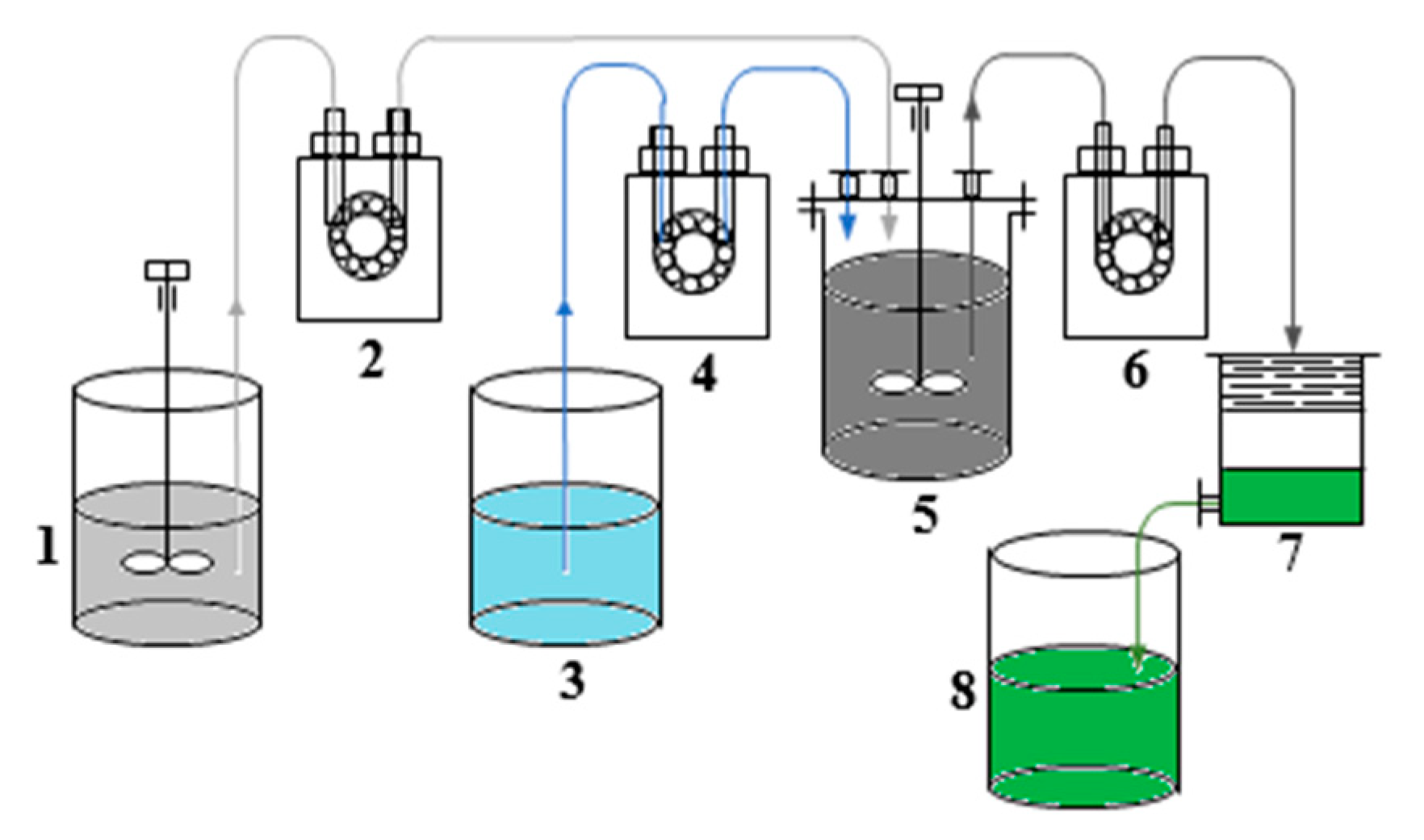

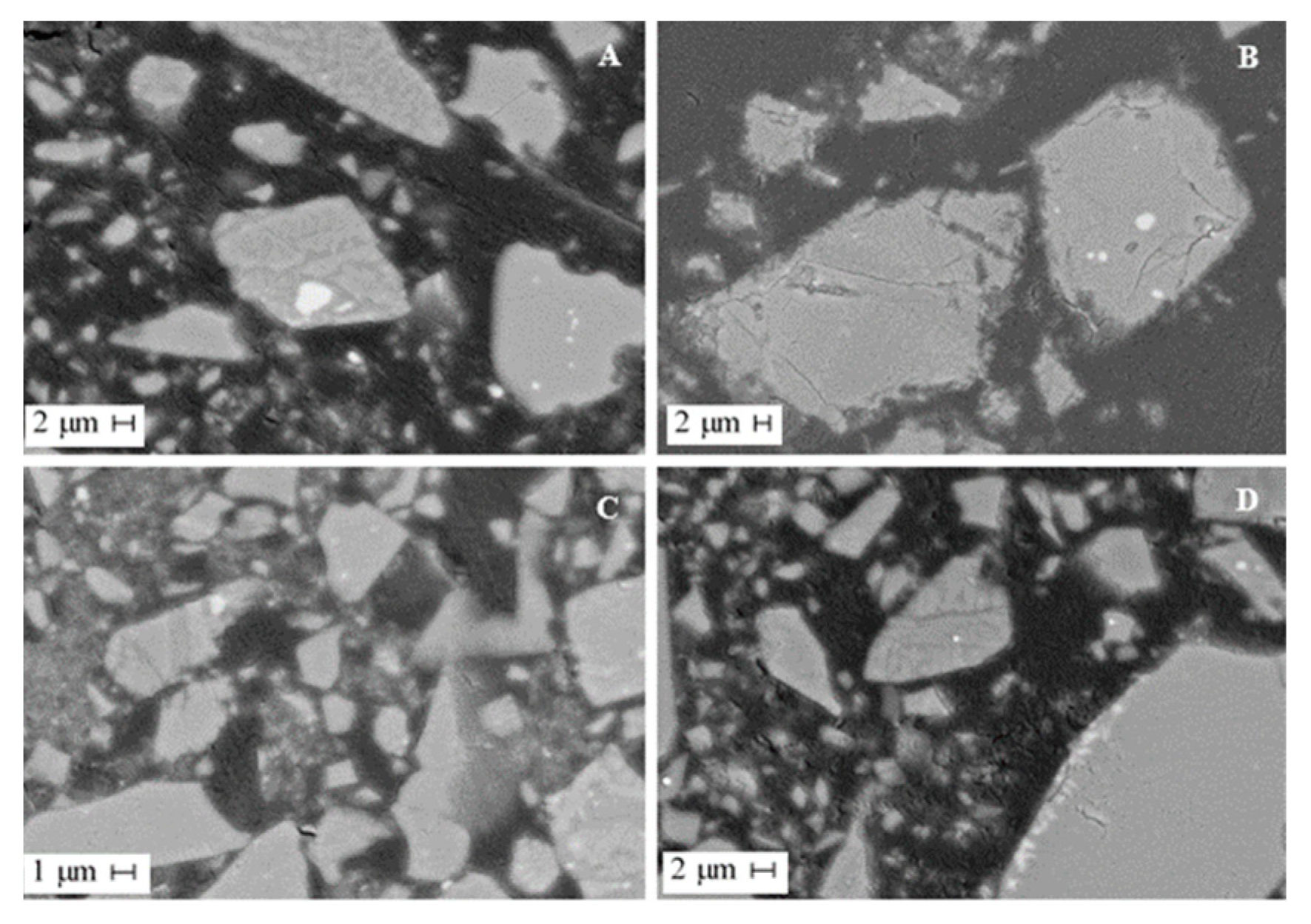

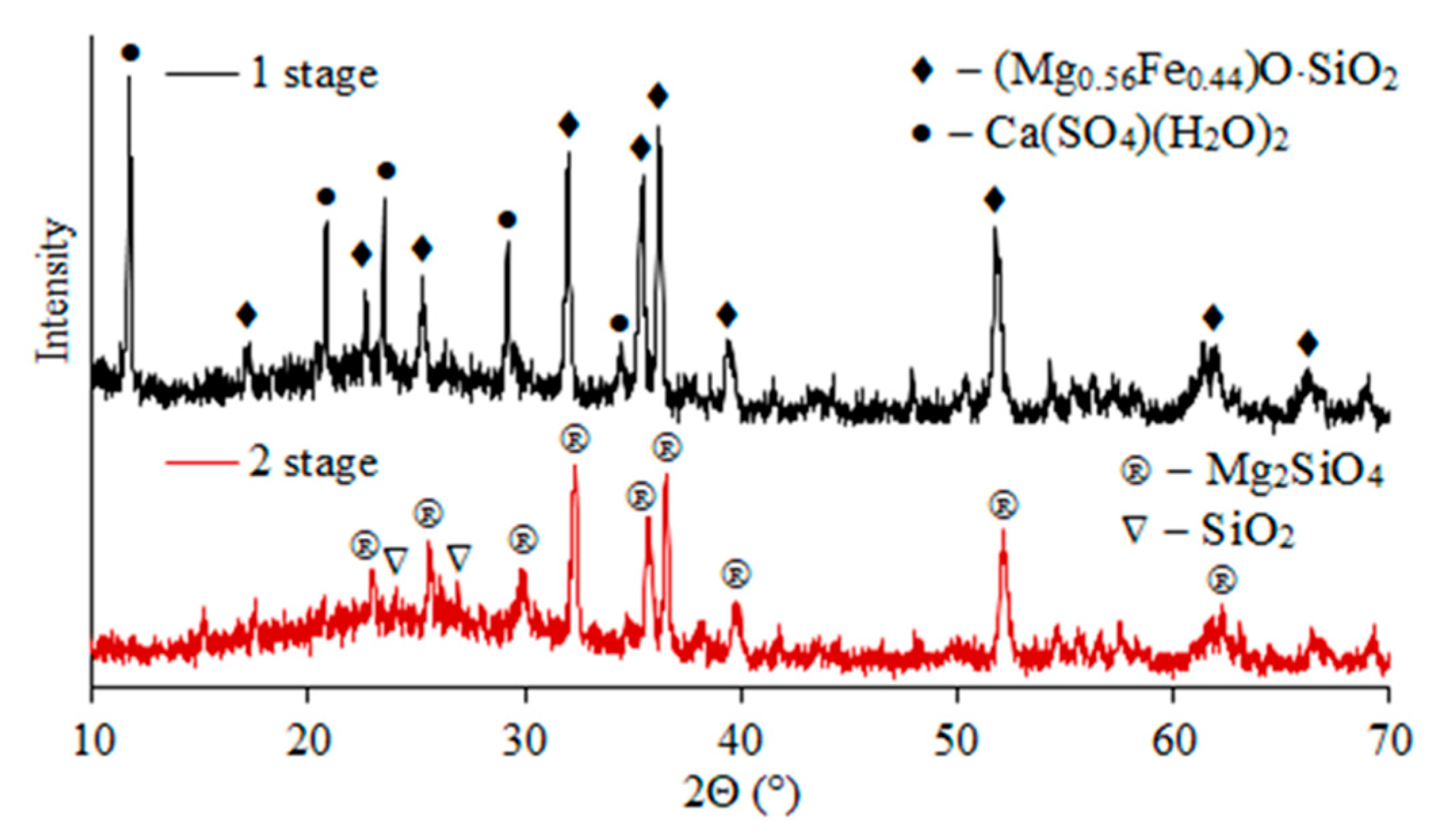
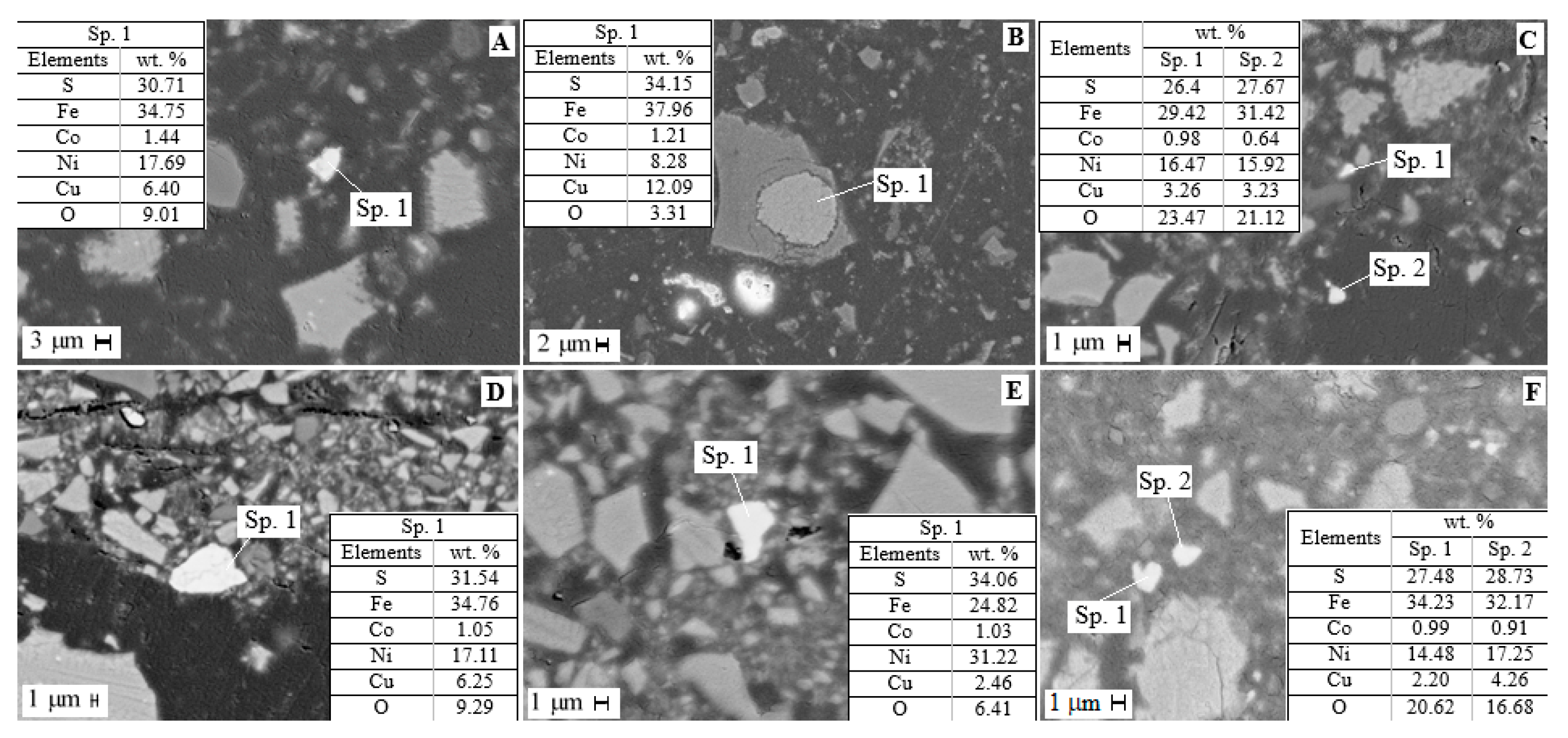
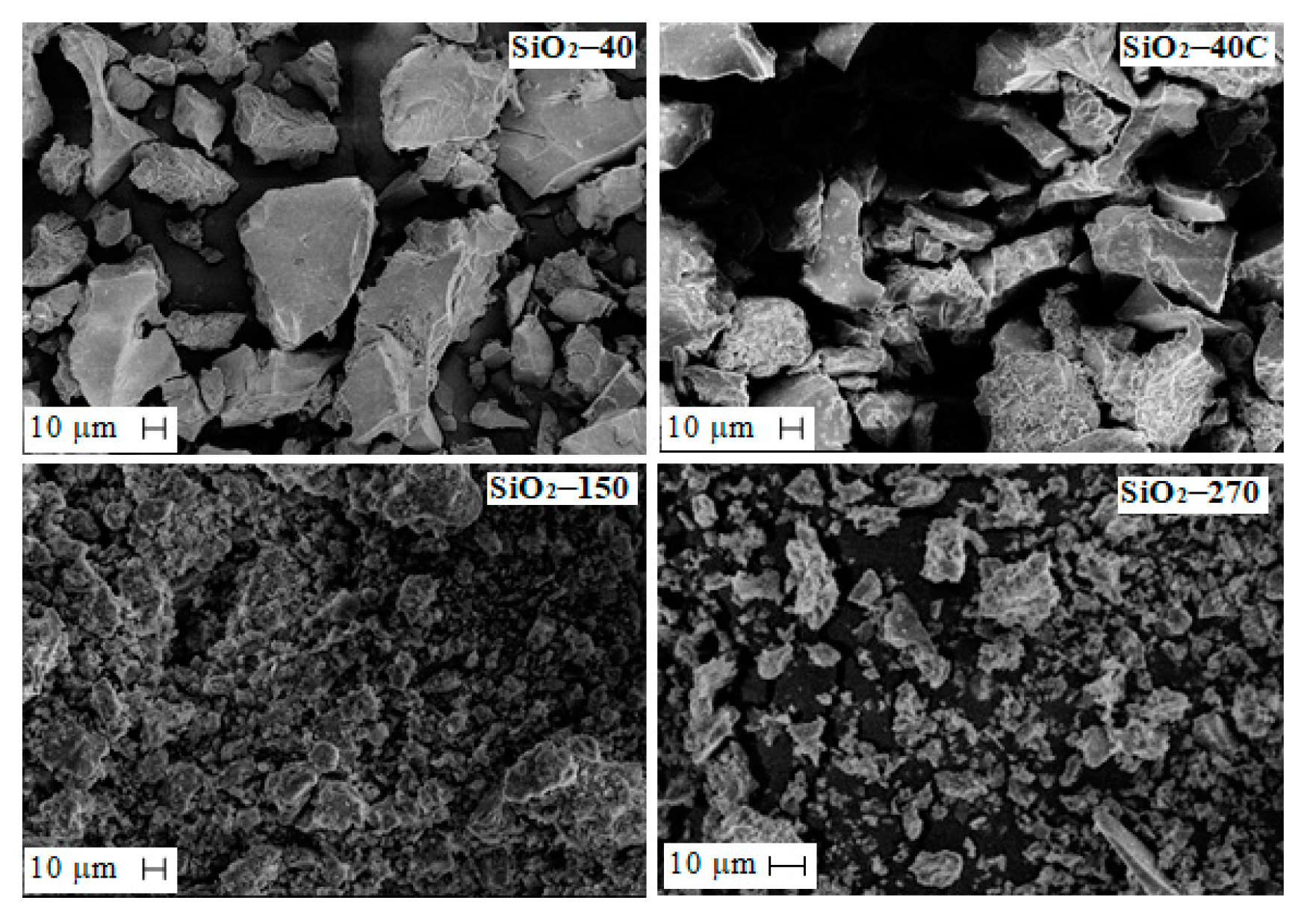
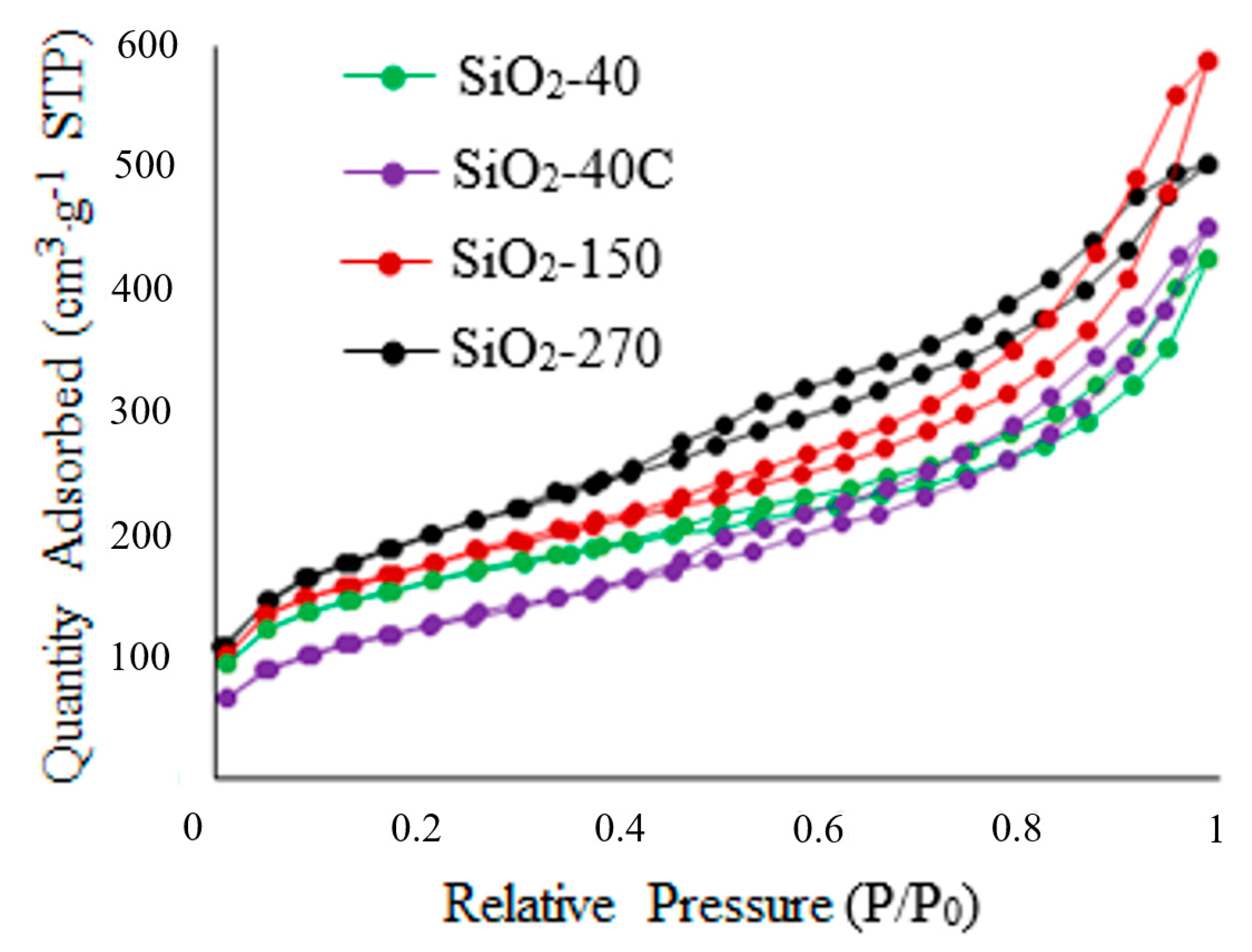


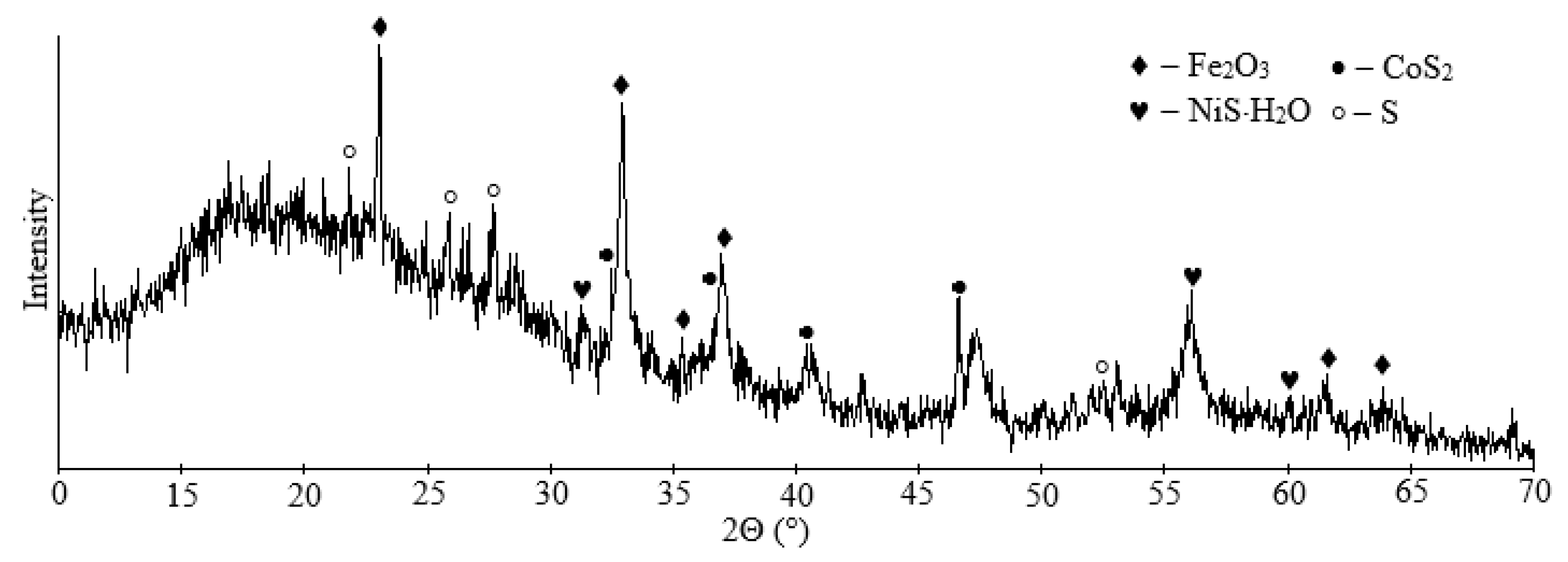
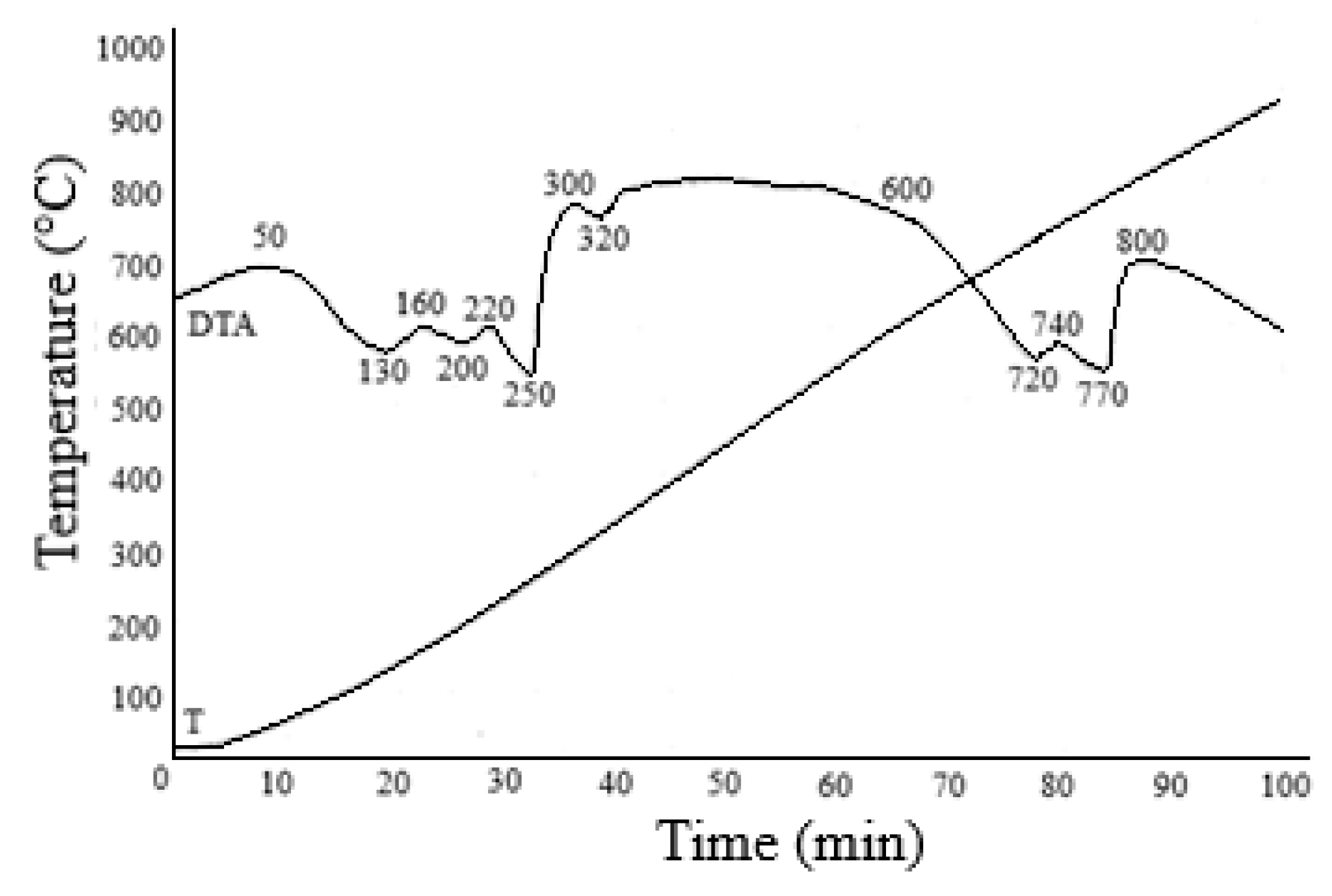
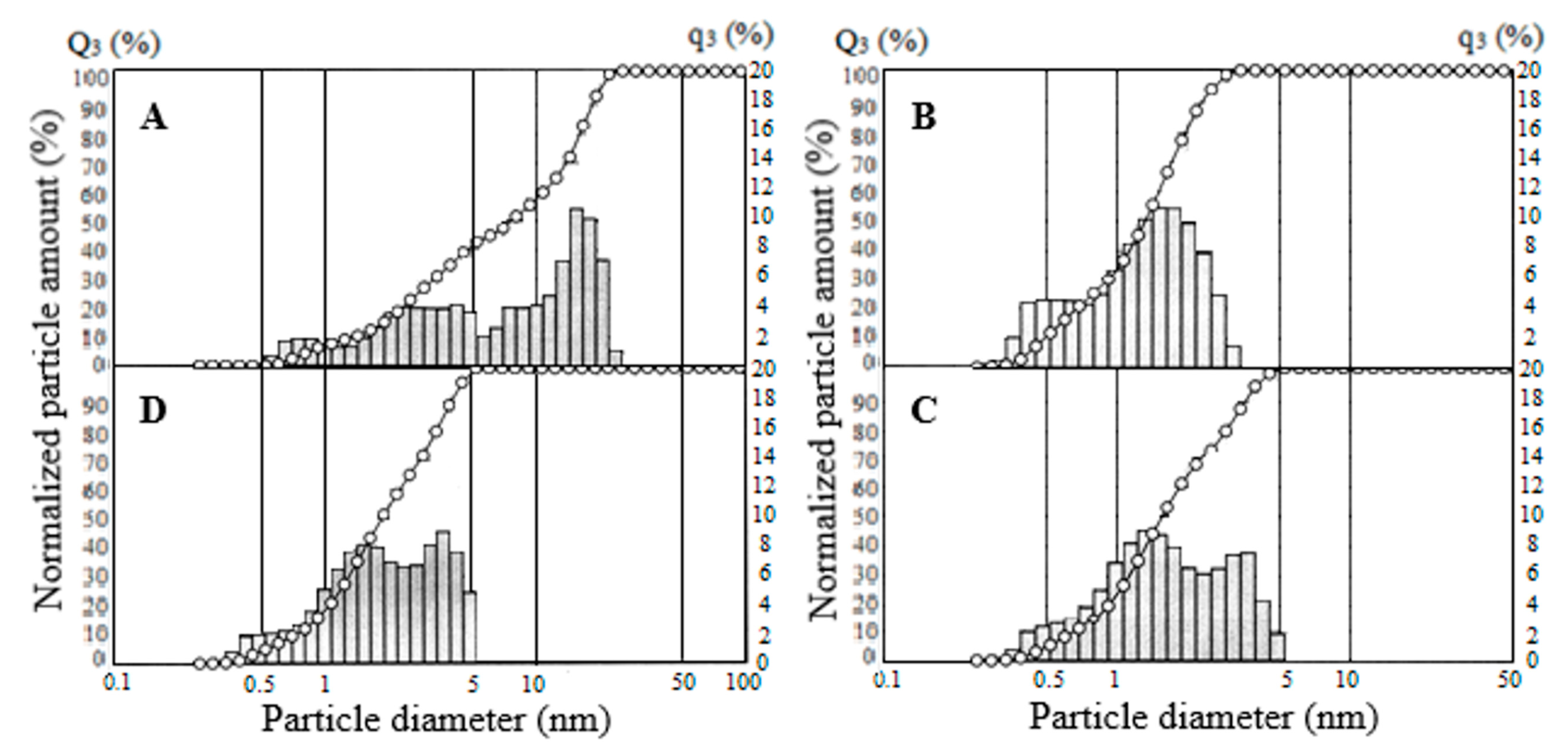


| Parameter | Extraction (%) | ||||
|---|---|---|---|---|---|
| Si | Fe | Mg | Co | Ni | |
| Particle size. Conditions: CH2SO4 = 7%, S:L = 1:10, tinitial = 20 ± 2 °C, τ = 1 h. | |||||
| <40 μm | 69.9 | 61.4 | 75.3 | 66.4 | 19.5 |
| 40–80 μm | 64.0 | 55.1 | 68.5 | 59.8 | 18.7 |
| >80 μm | 60.9 | 55.1 | 66.4 | 57.8 | 16.8 |
| CH2SO4. Conditions: S:L = 1:10, tinitial = 20 ± 2 °C, τ = 1 h, particle size < 80 μm | |||||
| 7.0 wt.% | 64.0 | 55.1 | 68.5 | 59.8 | 18.7 |
| 10.0 wt.% | 65.5 | 56.5 | 70.9 | 57.6 | 17.8 |
| 12.5 wt.% | 73.6 | 59.8 | 74.0 | 44.5 | 5.9 |
| S:L ratio. Conditions: CH2SO4 = 7 wt.%, tinitial = 20 ± 2 °C, τ = 1 h, particle size < 80 μm | |||||
| 1:15 | 83.0 | 88.7 | 78.8 | 84.0 | 25.0 |
| 1:10 | 65.9 | 57.4 | 70.3 | 60.4 | 19.5 |
| 1:9 | 64.0 | 55.1 | 68.5 | 59.8 | 18.7 |
| 1:6 | 27.9 | 28.4 | 26.0 | 30.3 | 9.6 |
| Initial temperature. Conditions: CH2SO4 = 7 wt.%, S:L = 1:9, τ = 1 h, particle size < 80 μm | |||||
| 20 °C | 64.0 | 55.1 | 68.5 | 59.8 | 18.7 |
| 40 °C | 75.6 | 75.5 | 79.9 | 75.2 | 20.5 |
| 60 °C | 70.66 | 78.8 | 82.3 | 79.1 | 25.7 |
| 80 °C | 66.60 | 82.4 | 85.6 | 81.7 | 29.1 |
| Product | Metal Content (g·L−1/wt.%) | Metal Extraction (%) | ||||||||||||||
|---|---|---|---|---|---|---|---|---|---|---|---|---|---|---|---|---|
| Fe | Co | Ni | S | Si | Mg | Ca | Al | Fe | Co | Ni | S | Si | Mg | Ca | Al | |
| Filtrate | 17.8 | 0.07 | 0.05 | – | 12.5 | 5.4 | 0.5 | 2.0 | 60.3 | 59.9 | 19.1 | – | 59.1 | 65.2 | 25.2 | 56.8 |
| Residue | 24.6 | 0.1 | 0.4 | 1.9 | 17.8 | 6.9 | 2.36 | 3.3 | 39.2 | 41.6 | 80.7 | 100 | 39.1 | 38.8 | 55.3 | 43.4 |
| Product | Metal Content (g·L−1/wt.%) | Metal Extraction (%) | ||||||||||||||
|---|---|---|---|---|---|---|---|---|---|---|---|---|---|---|---|---|
| Fe | Co | Ni | S | Si | Mg | Ca | Al | Fe | Co | Ni | S | Si | Mg | Ca | Al | |
| Filtrate | 24.2 | 0.08 | 0.12 | – | 12.6 | 6.8 | 0.72 | 1.9 | 43.3 | 35.0 | 13.1 | – | 31.0 | 42.9 | 13.4 | 25.2 |
| Residue | 20.9 | 0.095 | 0.48 | 2.8 | 18.3 | 5.6 | 2.84 | 3.5 | 57.5 | 64.3 | 81.2 | 100 | 69.7 | 54.5 | 81.4 | 70.9 |
| Time (Days) | 1 | 2 | 3 | 4 | 5 | 6 | 7 | 8 |
|---|---|---|---|---|---|---|---|---|
| Viscosity (mPa·c) | 1.80 | 1.93 | 2.03 | 2.14 | 2.40 | 3.50 | 5.46 | 11.35 |
| Specimen | SBET, m2·g−1 | VΣ, cm3 | Smicro, m2·g−1 | Vmicro αs, cm3·g−1 | Dpore, nm |
|---|---|---|---|---|---|
| SiO2-40 | 525 | 0.548 | 95.35 | 0.050 | 4.02 |
| SiO2-40C | 440.65 | 0.595 | 20.76 | 0.008 | 5.40 |
| SiO2-150 | 545.81 | 0.744 | 97.38 | 0.051 | 4.97 |
| SiO2-270 | 676.62 | 0.739 | 55.54 | 0.027 | 4.27 |
| Index | SiO2-40 | SiO2-40C | SiO2-150 | SiO2-270 |
|---|---|---|---|---|
| SiO2 (wt.%) | 73.1 | 85.12 | 74.58 | 87.00 |
| Mass fraction of water (wt.%) | 5.56 | 5.5 | 2.06 | 4.2 |
| Loss on ignition (LOI) (%) | 4.70 | 5.0 | 5.23 | 8.4 |
| CaO (wt.%) | 1.91 | ≤0.002 | 0.182 | 0.064 |
| Fe2O3 (wt.%) | 1.22 | 0.037 | 0.886 | 0.100 |
| Al2O3 (wt.%) | 0.19 | ≤0.02 | 0.170 | 0.057 |
| TiO2 (wt.%) | 0.310 | 0.140 | 0.267 | 0.184 |
| (wt.%) | 3.4 | 0.018 | 2.362 | 0.147 |
| SBET (m2·g−1) | 525 | 440 | 545 | 598 |
| Bulk density (g·L−1) | 76 | 38 | 61 | 29 |
| pH of 4% dispersion | 2.3 | 4.18 | 2.79 | 2.72 |
| Temperature, °C | Fe | Mg | Ca | Al | ||||
|---|---|---|---|---|---|---|---|---|
| g·L−1 | % | g·L−1 | % | g·L−1 | % | g·L−1 | % | |
| 750 | 0.10 | 0.17 | 25.2 | 97.8 | 0.71 | 92.3 | 0.025 | 5.4 |
| 800 | 0.011 | 0.02 | 22.3 | 94.6 | 0.64 | 89.6 | <10−3 | - |
| 850 | <10−3 | - | 20.2 | 92.1 | 0.58 | 89.4 | <10−3 | - |
| Property | Fe2O3 Powders | |||
|---|---|---|---|---|
| Fe2O3 R130 | Fe2O3-750 | Fe2O3-800 | Fe2O3-850 | |
| Fe2O3 (wt.%) | ≥96 | 97.1 | 96.4 | 96.4 |
| Al2O3 (wt.%) | - | 2.9 | 3.4 | 3.4 |
| CaO (wt.%) | - | 0.03 | 0.02 | 0.01 |
| Dispersity (μm) | 0.6–25.8 | 0.29–3.4 | 0.29–5.24 | 0.29–5.24 |
| pH of aqueous suspension | 4.0 | 4.1 | 4.6 | |
| Water soluble matter (wt.%) | 0.4 | 0.2 | 0.1 | |
| Sample | Colorimetric Analysis | ||
|---|---|---|---|
| L* | a* | b* | |
| Fe2O3-750 | 64.59 | −16.83 | 49.12 |
| Fe2O3-800 | 26.58 | 14.15 | 11.97 |
| Fe2O3-850 | 29.88 | 17.84 | 11.22 |
| Fe2O3 R130 | 29.31 | 18.86 | 12.97 |
Disclaimer/Publisher’s Note: The statements, opinions and data contained in all publications are solely those of the individual author(s) and contributor(s) and not of MDPI and/or the editor(s). MDPI and/or the editor(s) disclaim responsibility for any injury to people or property resulting from any ideas, methods, instructions or products referred to in the content. |
© 2023 by the authors. Licensee MDPI, Basel, Switzerland. This article is an open access article distributed under the terms and conditions of the Creative Commons Attribution (CC BY) license (https://creativecommons.org/licenses/by/4.0/).
Share and Cite
Kasikov, A.G.; Shchelokova, E.A.; Timoshchik, O.A.; Semushin, V.V. Deep Processing of Dump Slag from the Copper-Nickel Industry. Metals 2023, 13, 1265. https://doi.org/10.3390/met13071265
Kasikov AG, Shchelokova EA, Timoshchik OA, Semushin VV. Deep Processing of Dump Slag from the Copper-Nickel Industry. Metals. 2023; 13(7):1265. https://doi.org/10.3390/met13071265
Chicago/Turabian StyleKasikov, Alexandr G., Elena A. Shchelokova, Olga A. Timoshchik, and Vasilij V. Semushin. 2023. "Deep Processing of Dump Slag from the Copper-Nickel Industry" Metals 13, no. 7: 1265. https://doi.org/10.3390/met13071265





